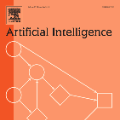Can artificially intelligent systems follow rules? The answer might seem an obvious `yes', in the sense that all (current) AI strictly acts in accordance with programming code constructed from highly formalized and well-defined rulesets. But here I refer to the kinds of rules expressed in human language that are the basis of laws, regulations, codes of conduct, ethical guidelines, and so on. The ability to follow such rules, and to reason about them, is not nearly as clear-cut as it seems on first analysis. Real-world rules are unavoidably rife with open-textured terms, which imbue rules with a possibly infinite set of possible interpretations. Narrowing down this set requires a complex reasoning process that is not yet within the scope of contemporary AI. This poses a serious problem for autonomous AI: If one cannot reason about open-textured terms, then one cannot reason about (or in accordance with) real-world rules. And if one cannot reason about real-world rules, then one cannot: follow human laws, comply with regulations, act in accordance with written agreements, or even obey mission-specific commands that are anything more than trivial. But before tackling these problems, we must first answer a more fundamental question: Given an open-textured rule, what is its correct interpretation? Or more precisely: How should our artificially intelligent systems determine which interpretation to consider correct? In this essay, I defend the following answer: Rule-following AI should act in accordance with the interpretation best supported by minimally defeasible interpretive arguments (MDIA).
翻译:人工智能系统能否遵循规则?答案可能看起来是显而易见的“是的 ”, 也就是说,所有(当前)AI 都严格地按照从高度正规化和明确界定的规则构建的编程守则行事。 但这里我指的是以人类语言表达的规则,这些规则是法律、规章、行为守则、道德准则等的基础。 遵守这些规则并解释这些规则的能力不如最初的分析那样明确。 现实世界规则不可避免地带有开放的术语,这些术语包含着可能无穷无尽的解释。 缩小这套规则需要一个复杂的推理过程,而这个过程还不属于当代AI的范围。 这给自主的AI带来了严重的问题:如果人们不能用开放的术语来解释规则,那么人们就无法以(或按照)现实世界规则来解释这些规则。如果人们不能以最低规则为借口,那么人们就无法做到:遵守人类法律,遵守规则,按照书面协议行事,或者甚至执行任务特定指令,而这种解释比琐碎的要简单得多。 但是,在解决这些问题之前,我们必须更准确地理解一个正确的解释: 正确的解释: 正确的是,我们必须用什么行动来解释: 正确的解释: 正确的解释: 正确的是正确的解释: 正确的是, 正确的解释: 正确的是, 正确的是,我们必须的 正确的解释。




